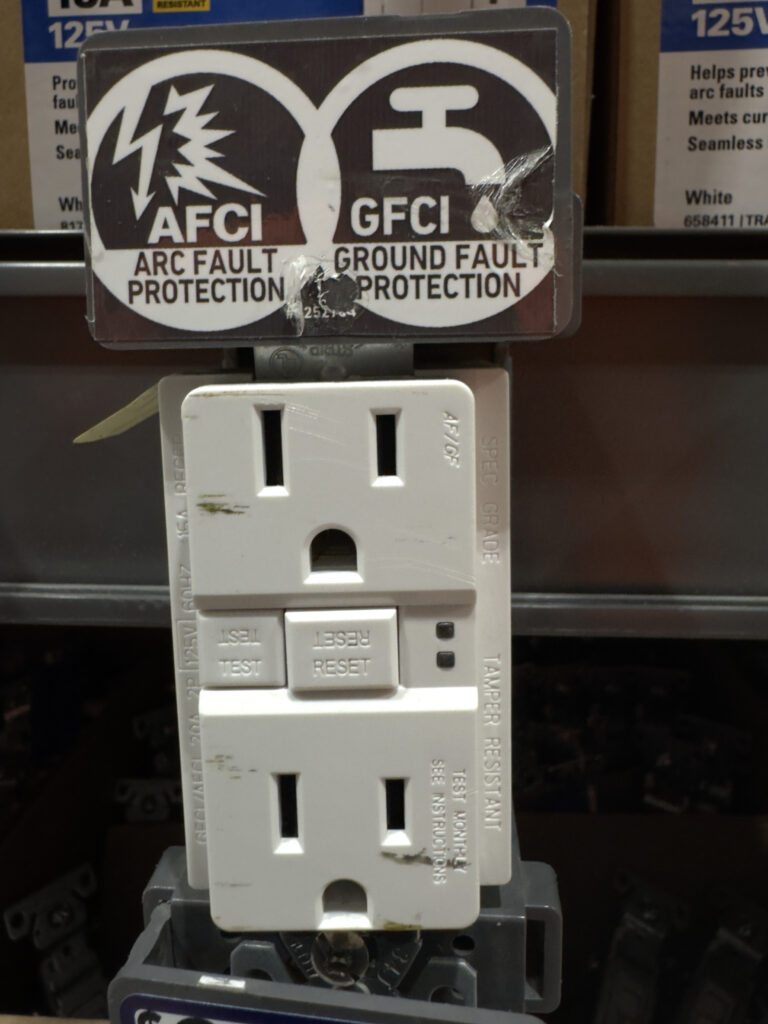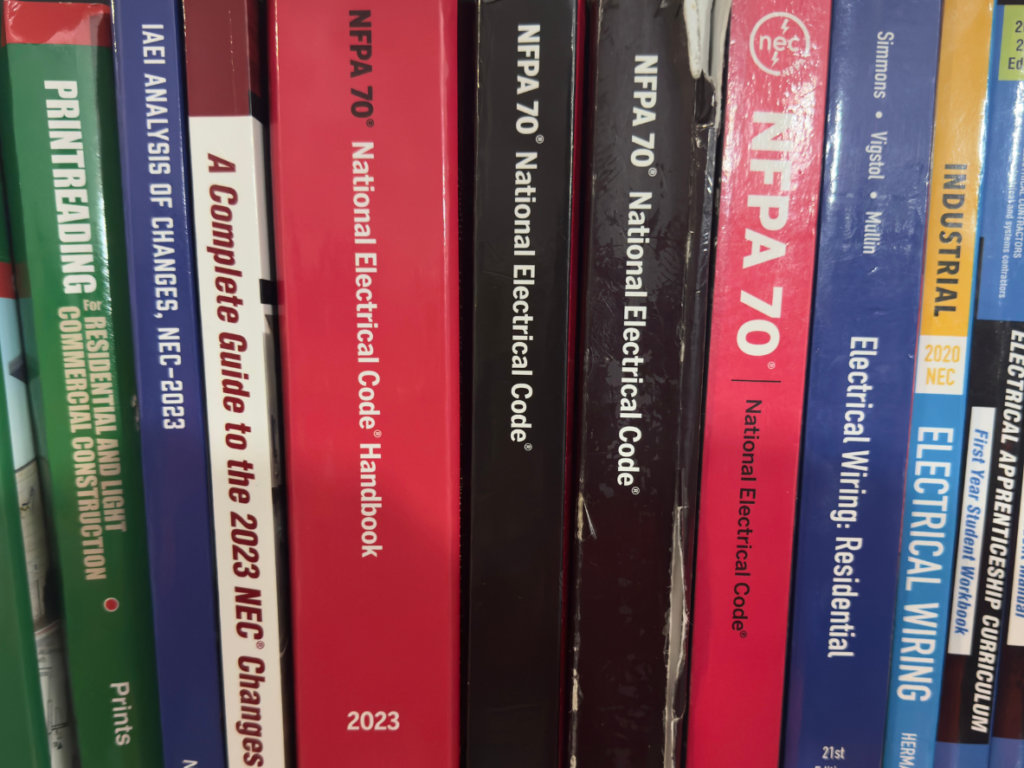
Some pictures of NFPA 70 books through each cycle.
Handy Randy, the handyman whose claim to fame is that he can do things cheaper, doesn’t have contractor insurance and there won’t be any recourse for you if there’s an event that’s caused by his lack of knowledge. You should consider hiring a licensed professional (see Blog #1) who knows where a safety upgrade is recommended and how to properly install such devices. An improperly-wired electrical safety component is the same as not having one at all. A licensed electrical contractor will have the technical expertise and contractor insurance to help you feel comfortable with the work being performed.
Let’s start with some of the basics of electricity. The rate at which electrical current flows is measured in amperes, or amps. It’s similar to how fast you drive being measured in miles per hour. There are 1,000 milliamps (mA) in 1 amp (A) and it takes just 9 mA to stop your heart. Anything greater than that can cause further injury or death.
Electricians follow the National Electric Code (NEC) which is commonly referred to as “Code” or “the Code book”. The NEC is updated every 3 years and is a collaboration between public input, attorneys, the insurance industry, electricians, and equipment manufacturers. The NEC is a minimum safety standard and is constantly evolving as technology changes as well as because of instances where there has been an injury, loss of property, and/or loss of life.
The minimum safety standard when your house was built probably isn’t the minimum safety standard now. Ground Fault Circuit Interrupter (GFCI) and Arc Fault Circuit Interrupter (AFCI) are just two examples of protection that have evolved and expanded to other areas of your residence with every Code cycle.
The GFCI technology was developed in the early 1960’s by an electrical engineering professor at the University of California – Berkeley. The focus was on ways to make people safe from electrical shock. The safety standard for a GFCI is to “trip” or turn off electricity to the receptacle when it senses an imbalance of current at 6 mA, or 6/1000th of 1 A. Before any kind of shock or electrocution can occur, the GFCI will trip and help preserve life/property.
AFCI technology hasn’t been around as long. The standard for AFCI protection was developed around 1997 and incorporated into the 1999 NEC. Here are two links to the Consumer Product Safety Commission website with the history of the development of AFCI as well as data regarding electrocutions.
New Technology for Preventing Residential Electrical Fires: AFCIs
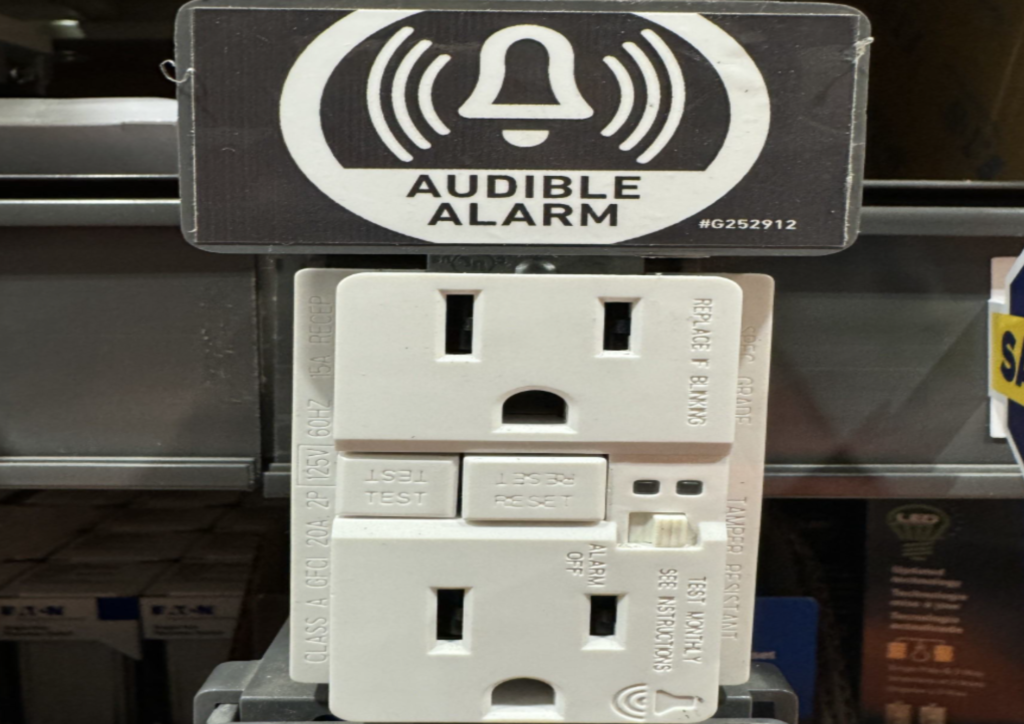
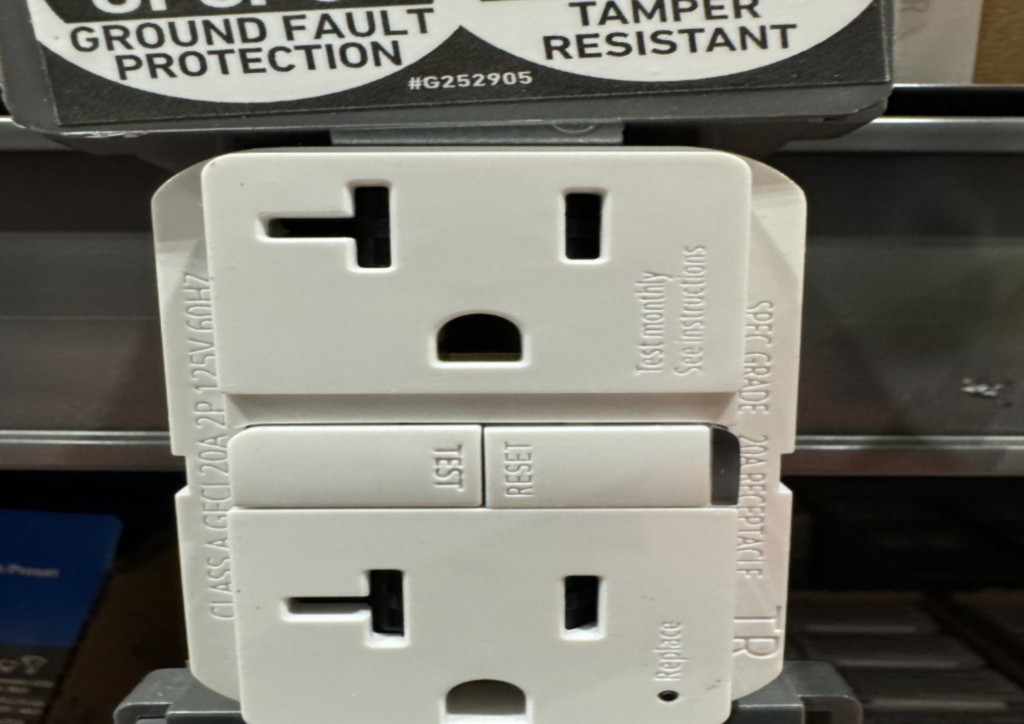
This receptacle is not common in a residential environment. This is unique because of the audible alarm when the GFCI protection shuts off power to the receptacle. It also has indicator lights for added functionality.
This device provides GFCI protection as well as the tamper-resistant feature. An indicator light tells you when the device is no longer functioning properly and needs to be replaced.
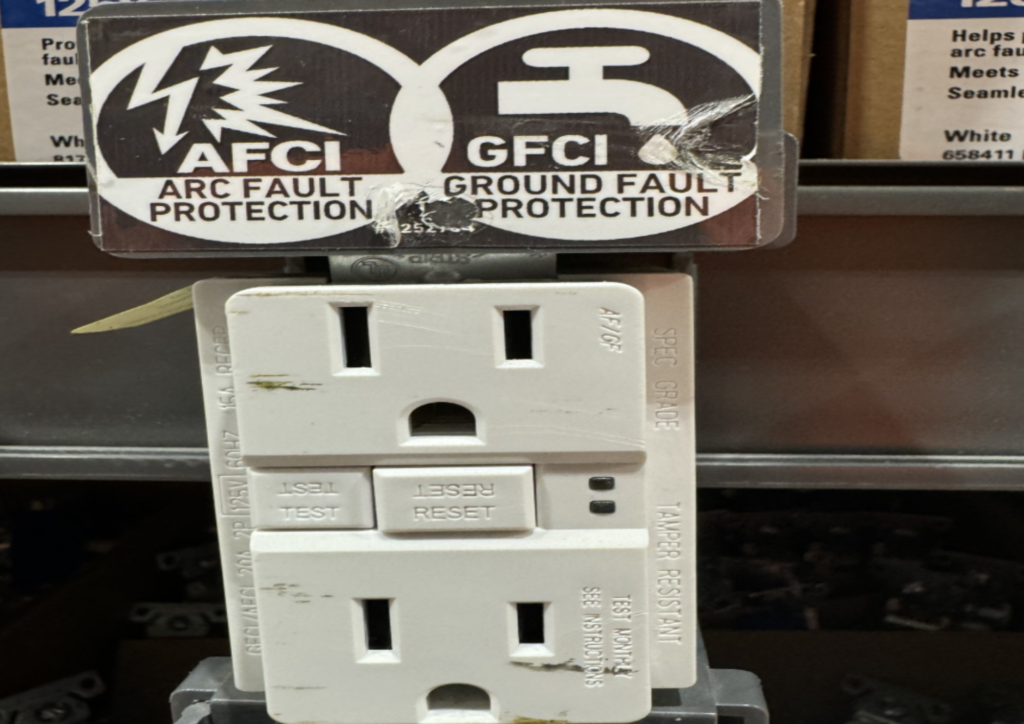
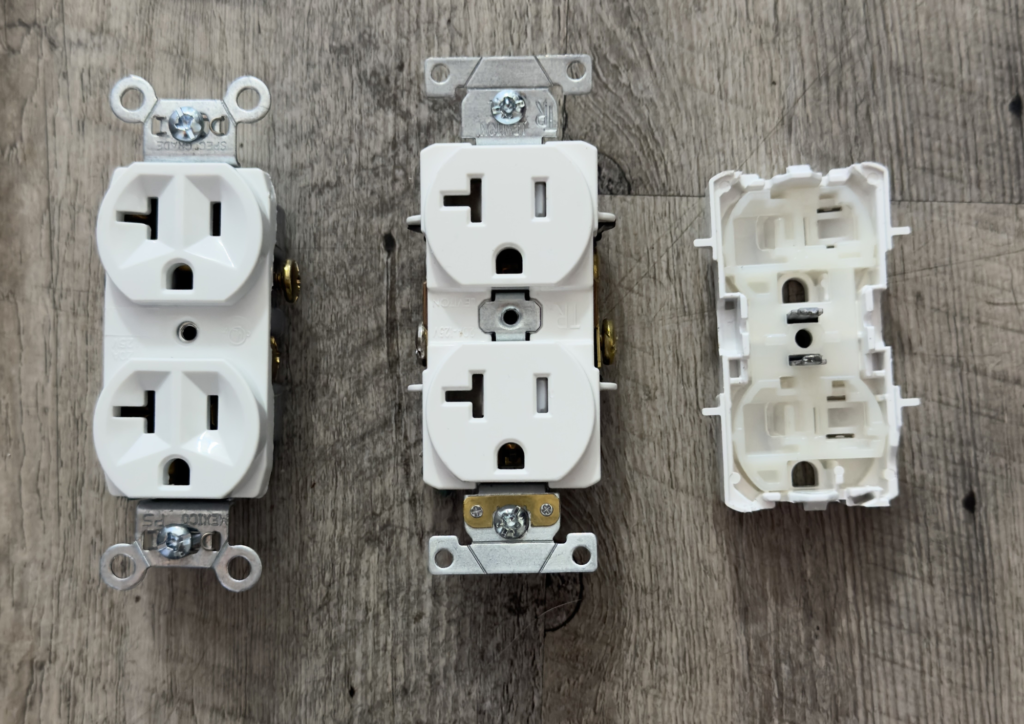
This is a receptacle the provides both AFCI and GCI protection, often called “dual function” because it provides two forms of protection in one device.
An example of a non-tamper-resistant receptacle is on the left. The middle receptacle is a tamper resistant receptacle and the right is what it looks like on the inside.
Here are links to a couple of manufacturer’s websites with more information on different forms on GFCI and AFCI protection.
An electrical cord that is frayed because of being pinched by a door or a drawer is one example of how arcing can be a danger. A loose wiring connection is another example. It could be a hair dryer, a vacuum cleaner, or the cord to a Christmas tree that could arc and cause a fire. Even in the article from Leviton, they point out that that danger could be hidden in a wall that you’ll likely never know about until it’s too late. That’s where AFCI protection could be the difference between a house catching on fire or not.
Going back to the minimum safety standard, GFCI and AFCI are two examples of how your house can be brought up to the current safety standard. Tamper resistant (TR) receptacles are another. These receptacles have shutters in the slots where the blades from an electrical cord will connect. A curious child with something small and flat (such as a butter knife or screwdriver) will not be able to stick it in the slot of a tamper resistant receptacle. If you’re a new grandparent, a new aunt/uncle, or a parent of a young child, upgrading to tamper-resistant receptacles is something you should also think about.
Why should you consider a safety upgrade? A hidden danger, a curious child, sub-standard work that was performed, or outdated safety standards are just some of the reasons to upgrade.
When you hire us, you’re not just getting any licensed electrician; you’re getting top-tier service with numerous benefits, including:
